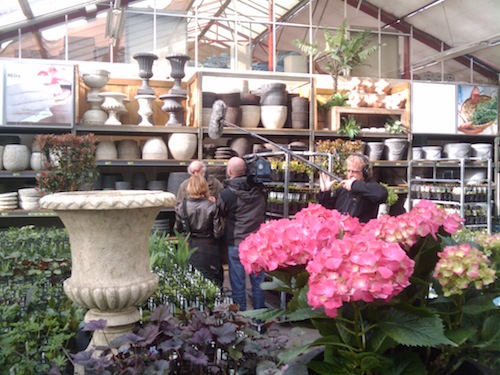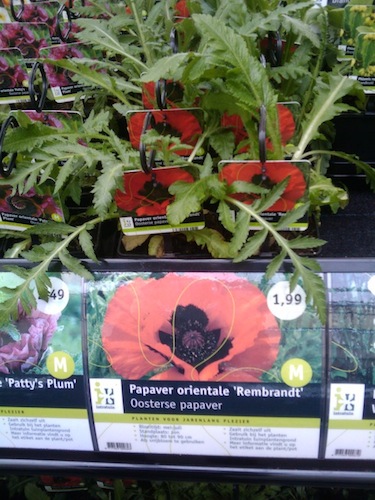Garden escapees: Amsterdam flora of the future
In early spring, urban botanist Claud Biemans (Floron Amsterdam), led plant aficionados on an early bird excursion through the giant Intratuin garden centre.
Inside the store, Claud showed the source of the Amsterdam flora of the future: garden escapees. These ‘escapees’ are plants that are constantly redistributed as they migrate beyond their ornamental confines and into the wider urban landscape. Claud led us through the perennial plant department and showed us the varieties of plants cultivated and sold in the garden industry today which have escaped horticultured enclosures and regenerate themselves in the intermediary green zones of the city: autnomously on roofs and in gutters and along canal walls. It’s fascinating how these escapees break free from their decorative purpose and become, in effect, wild again.
Many plants are patented hybrids cultivated to look a certain way, or have been introduced from elsewhere, such as the Caucusian forget-me-not (Brunnera macrophylla) or the Fleabane wall daisy (Erigeron karvinskianus) originally from Mexico that now colonises almost every wall in Amsterdam. Both are perfect examples of biological globalisation. Edible or medicinal plants include a type of Comfrey (Symphytum grandiflorum), Wall pepper (Sedum acre), Oriental poppy (Papaver orientale) named ‘Rembrandt’, and variants of the Hollyhock (Alcae rosea) which do extremely well in very little soil along the edges and in pavement fractures.
As Claud pointed out, many of the garden getaways eventually become recognised by the Dutch plant handbook: Heukel’s Flora van Nederland [wiki, in dutch]. This happens when the plant in question has survived in the wild for at least 3 generations and reproduce seed. Cultivated varieties which were once indigenous become indigenous again or exotic species become ‘ingeburgeerd’ and recognised as an ‘integrated Dutch plant’.
Amsterdam is home to an eclectic diaspora of former garden plants. In a sense, Amsterdam is one big autonomous allotment garden. However, if the city is a huge open hortus home to a proliferation of perennial plant varieties, what happens when these plants do so well and spread further to the nature regions beyond the city? A kind of reverse cultivation that could, depending on the plant, diversify the local nature or, on the otherhand, become an invasive ecological monster that homogenises the eco-systems it thrives within.
The excursion was filmed by the television crew of Vroege Vogels, and will be aired in April on Dutch public television and online on the Vroege Vogels website.
The traditional garden is a privileged place of planetary mixing. In each garden, decorative species come from all the corners of the world. They form a planetary index. Each garden is an intermediary of meetings between species which were not intended, a priori, to meet. The planetary mixing, originally regulated by the natural play of the elements, increases because of human activity, itself always expanding. — Gilles Clément


